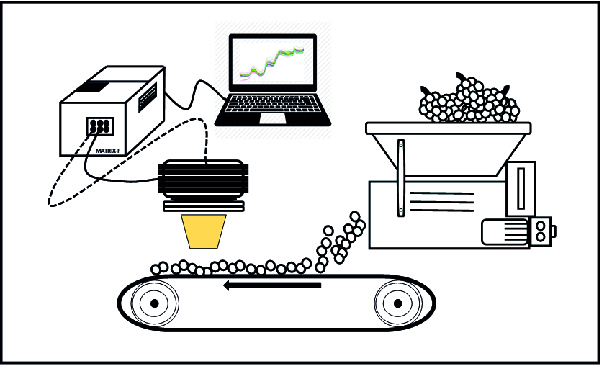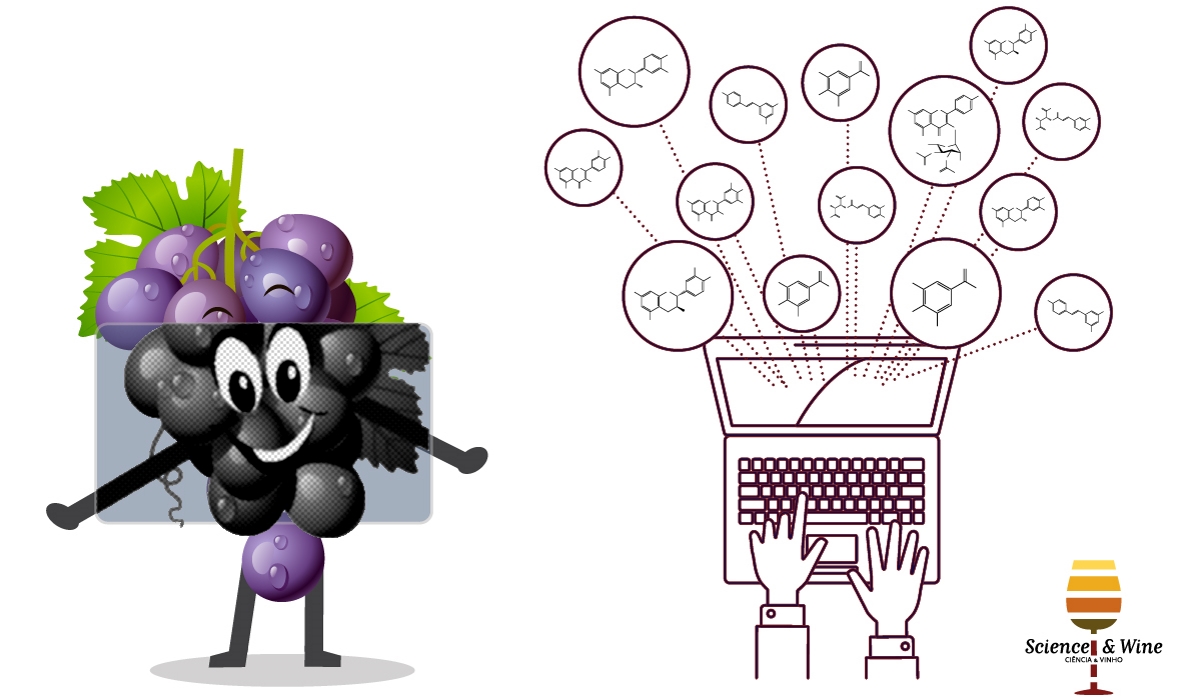By Jose Luis Aleixandre-Tudo
A research team at the Department of Viticulture and Oenology, Stellenbosch University (DVO) is one step closer to simplification of grape phenolic measurements. The importance of phenolic compounds is due to their crucial role played in the colour and mouthfeel properties of red wines. In a feasibility study recently published, the phenolic content of grapes on a moving conveyer belt was measured using a contactless NIR (Near Infrared) spectroscopy instrument. This inline-online approach was compared against static measurements using the same instrument. Intact as well as crushed berries were measured following the reasoning that phenolic content would be better quantified if grapes are crushed (e.g. the phenolic information of the seed phenolics will be better exposed to the NIR light). The results were compared against two chemical reference methods. The spectral measurements of the crushed berries and the homogenate extraction protocol provided the most accurate prediction models for the inline-online system going forward.

The use of NIR spectroscopy to measure grape phenolics is not new and various studies have reported on it. However, this is the first time where a contactless (no sample preparation) system was tested on a moving conveyer belt in real winery conditions, with very promising results. Such a system can be applied to red grape grading in addition to basic chemical parameters and sanitary status. It can also serve as a decision making tool as to which winemaking practices are needed during the fermentation phase, i.e. amount of pump overs per day, when to press off the skins, enzyme dosage, whether or not to use fermentation tannins, etc. The technology can also potentially be transferred to vineyards to attempt the monitoring of phenolic ripeness during the ripening season.
This project falls into a broader strategy of the research being conducted at the DVO in which efforts are currently being made towards the development of integrated systems to optimise the winemaking process. With the use of spectroscopy (light) applications a number of tools are in the process of being developed, covering from phenolic ripeness and content in grapes to fermentation and ageing monitoring in wines. An example of this can be seen in the South African Phenolics Laboratory (PhenoLAB) web based application that will be launched in 2019. Making use of ultraviolet-visible light and optimised prediction models this application will provide phenolic information in grapes, fermenting samples and wines with minimal analytical time. Other capabilities of the application include the possibility of comparing the generated data against an extensive database of phenolic levels, which can be very valuable for wine producers.
Those interested in a longer length report can download the working paper at:
https://www.sciencedirect.com/science/article/pii/S0308814618312652
References:
- Aleixandre-Tudo, J.L., Nieuwoudt, H., du Toit, W. Towards on-line monitoring of phenolic content in red wine grapes: A feasibility study. Food Chemistry 270 (2019) 322–331.

Jose Luis Aleixandre-Tudo is currently a researcher in the Department of Viticulture and Oenology at Stellenbosch University (South Africa). After obtaining his PhD in the Universitat Politecnica de Valencia in Spain he moved to South Africa to further investigate the effect of winemaking practices on the phenolic content and evolution during winemaking and aging. His main research focus has shifted towards the development of spectroscopy and chemometrics applications that are later incorporated in a broader process monitoring, control and optimization strategy.

